This tutorial introduce how the release notes of Agent-Chatroom is written using Agent-Chatroom and github agents. The release notes are generated based on the completed issue in the milestone of the project. The release notes are written in markdown format and are displayed on the release notes page.
Overview
There are two main steps to write the release notes of Agent-Chatroom:
- retrieve the completed issues in the milestone using
issue-helperfromChatRoom.Github. - use openai agent like
gpt-4oto generate the release notes based on the completed issues.
Installation and configuration
Make sure you follow the installation guide to install the Agent-Chatroom properly. Once you have installed the Agent-Chatroom, you would need to configure both the ChatRoom.Github and ChatRoom.OpenAI agents so you can use them in the chatroom by following the below steps:
chatroom create -t chatroom_empty -o config.json # create a chatroom with empty configuration and save it to config.json
This will create a chatroom with empty configuration and save it to config.json along with a schema which helps you with intellisense in the configuration file when you open it in modern code editors like Visual Studio Code.
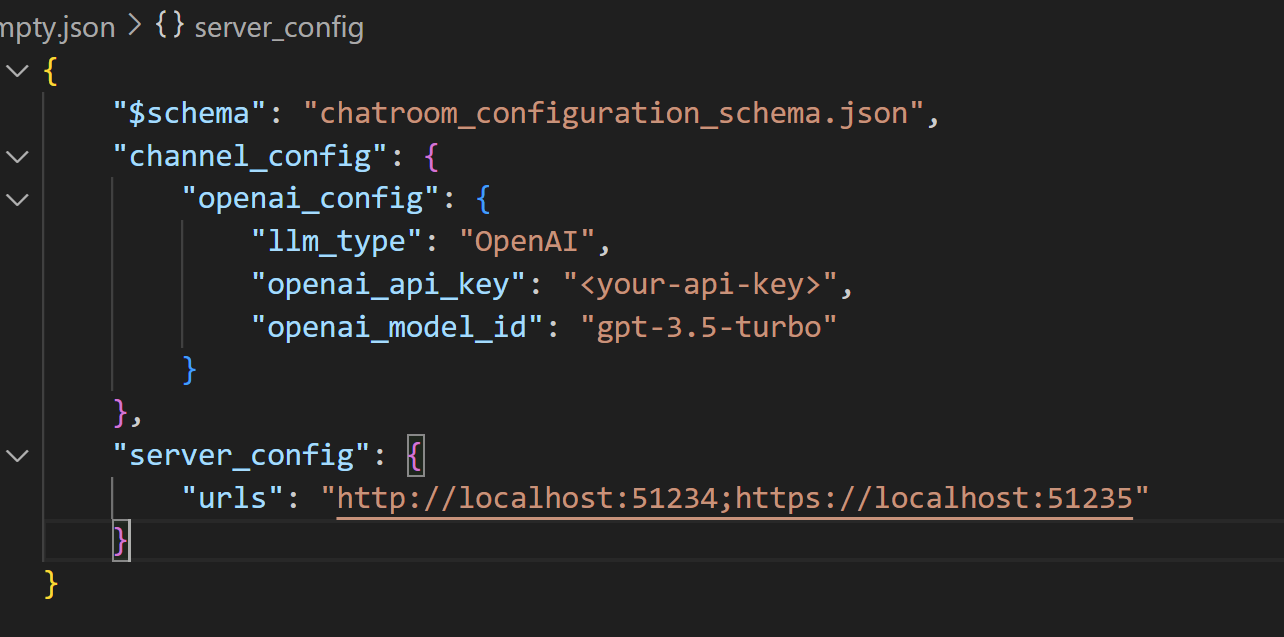
Next, you need to add the configuration for ChatRoom.Github and ChatRoom.OpenAI agents in the config.json file. You can add the configuration for ChatRoom.Github agent as shown below:
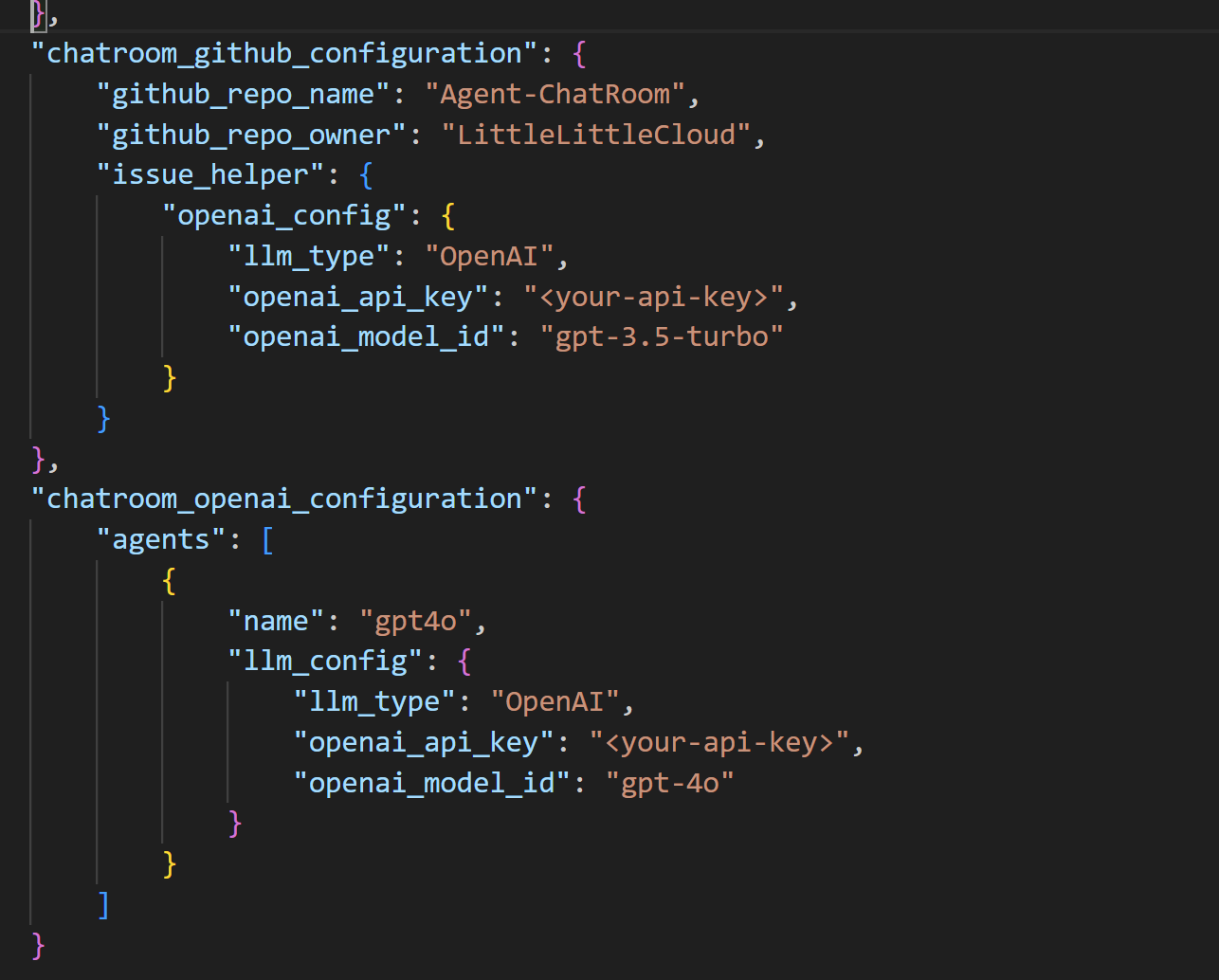
You can also download the complete configuration file from here. Remember to replace the <your-api-key> with your actual api key before using the configuration file.
Once you have added the configuration for ChatRoom.Github and ChatRoom.OpenAI agents, you can start the chatroom with the following command and navigate to the chatroom webui which runs at http://localhost:51234 and https://localhost:51235:
chatroom run -c config.json
Create channel with issue-helper and gpt4o agent
Once you have started the chatroom, you can create a channel with issue-helper and gpt4o agent by clicking on the + button in the chatroom webui and selecting the issue-helper and gpt4o agents from the list of available agents. Make sure you also select DynamicGroupChat orchestrator when configuring the channel. The DynamicGroupChat will use LLM to smartly select the next agent to respond to the user message.
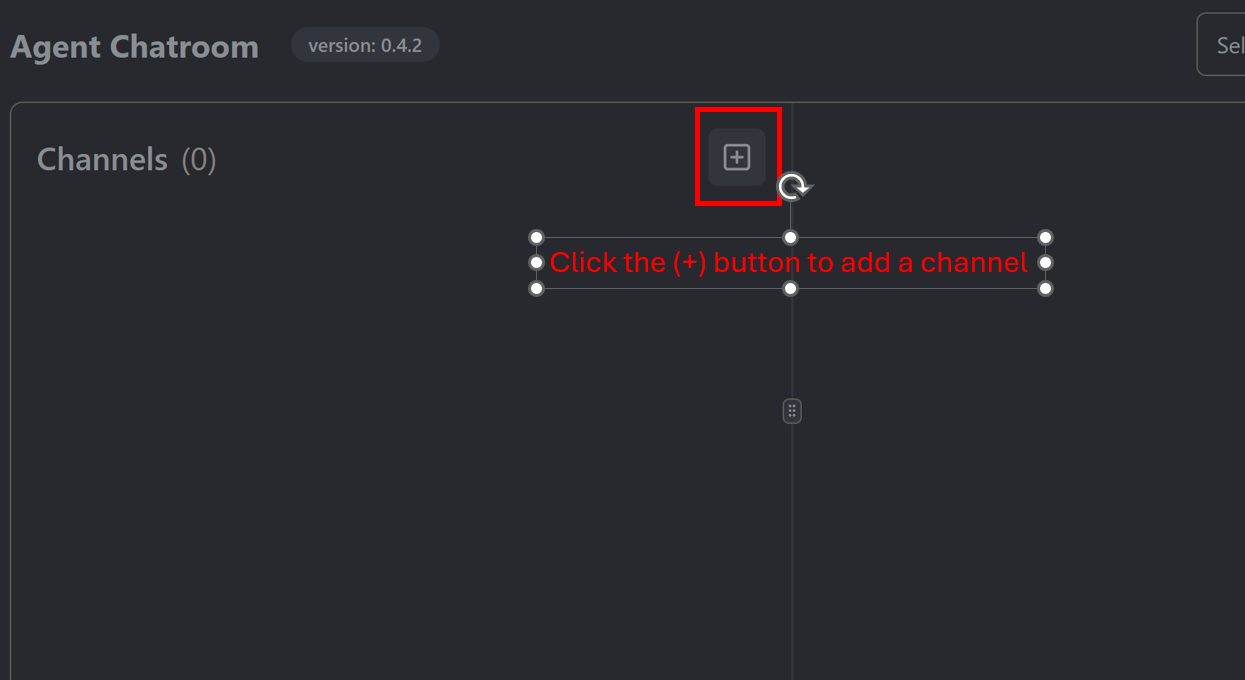

Once you create release-note channel, navigate to the channel by clicking on the channel name and start the conversation.
Generate release notes
To generate the release note for milestone: xxx, the first step is to retrieve all the completed issues in the milestone using the issue-helper agent. You can do this by sending the following message to the release-note channel:
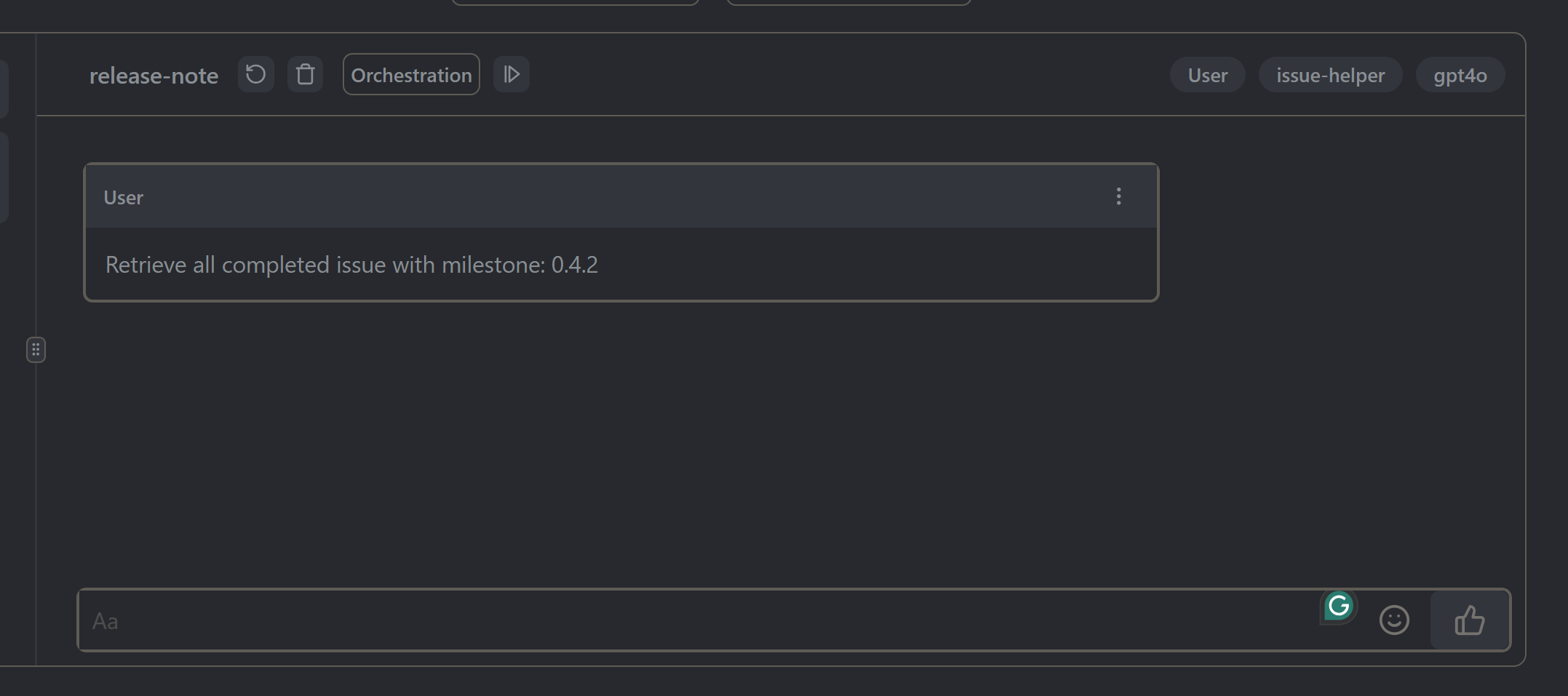
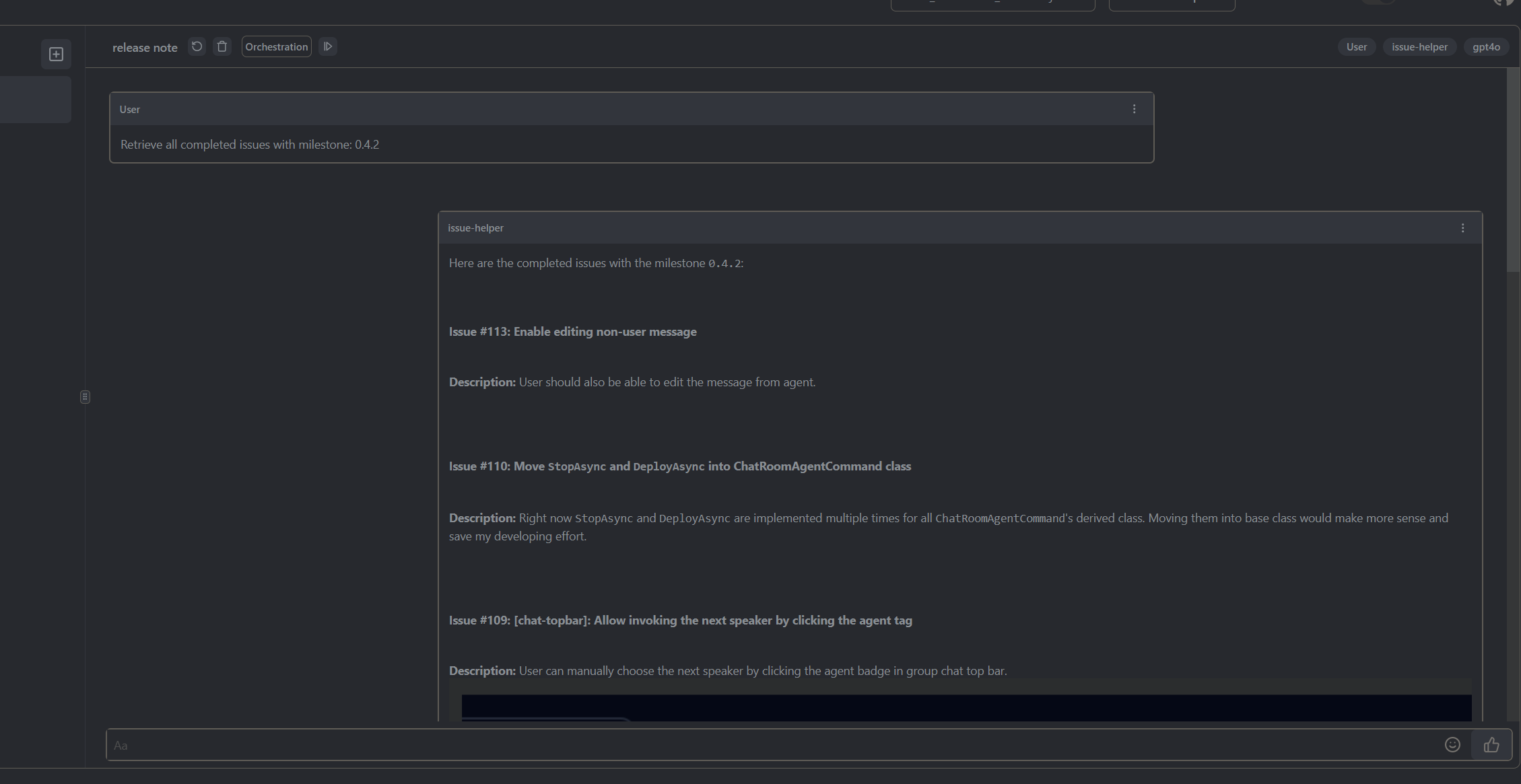
The issue-helper agent will respond with the list of completed issues in the milestone. You can then use the gpt4o agent to generate the release notes based on the completed issues. You can do this by sending the following message to the release-note channel:
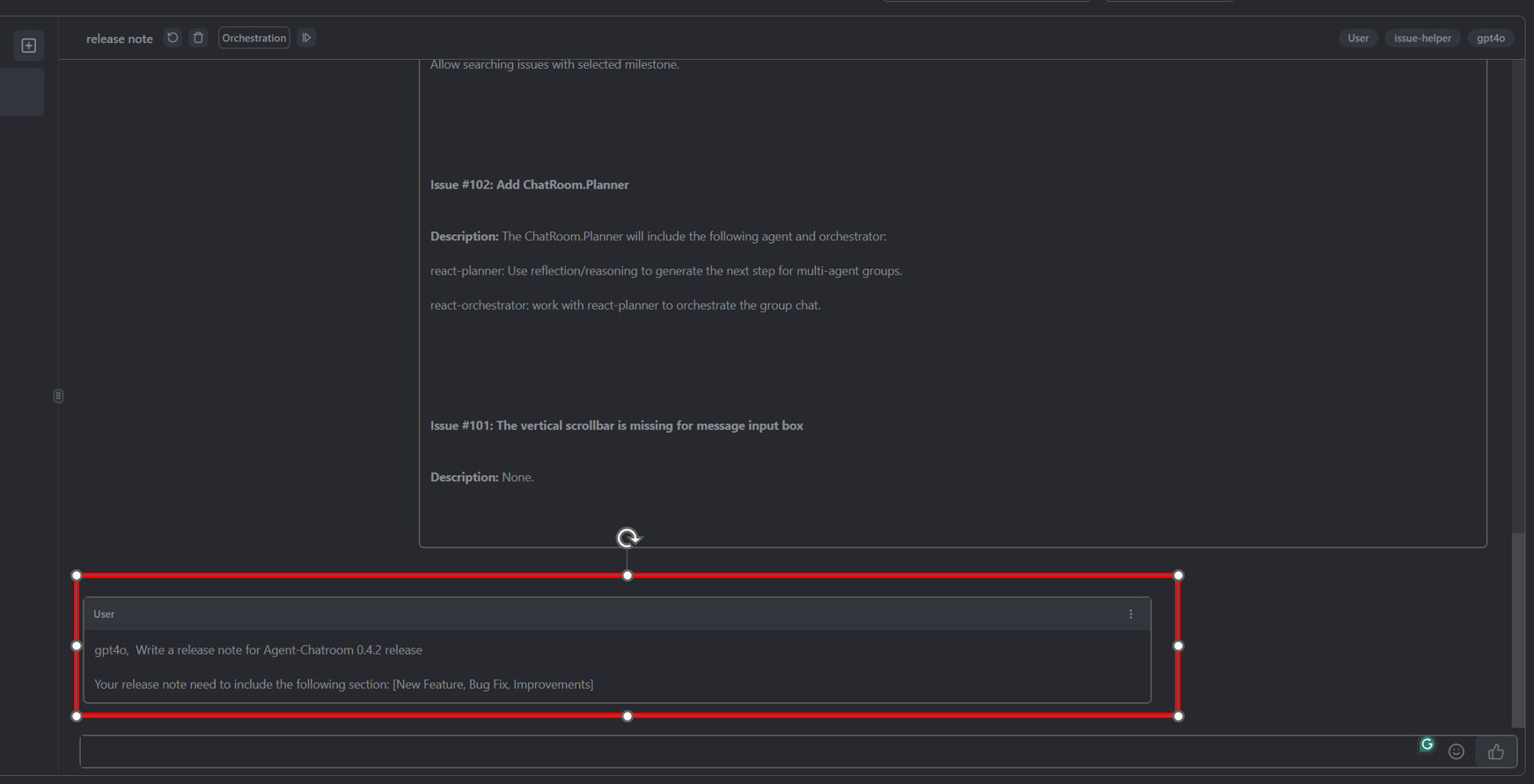
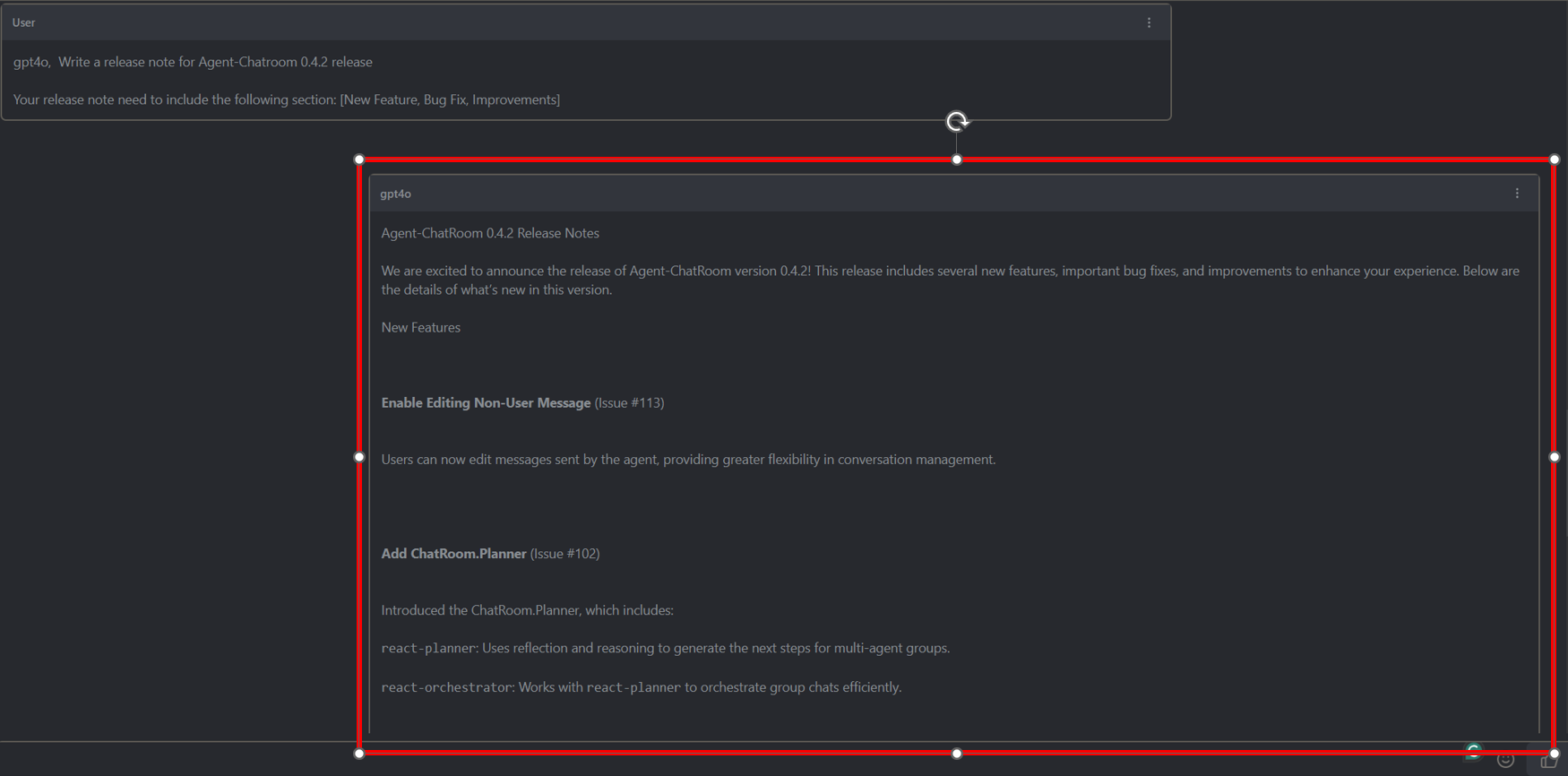
The gpt4o agent will respond with the release notes generated based on the completed issues in the milestone. After the release note are generated, you can ask gpt4o to improve the release note (if needed) or save the release note for further use.
Conclusion
This tutorial introduced how the release notes of Agent-Chatroom is written using Agent-Chatroom and github agents. The release notes are generated based on the completed issue in the milestone of the project. The release notes are written in markdown format and are displayed on the release notes page.